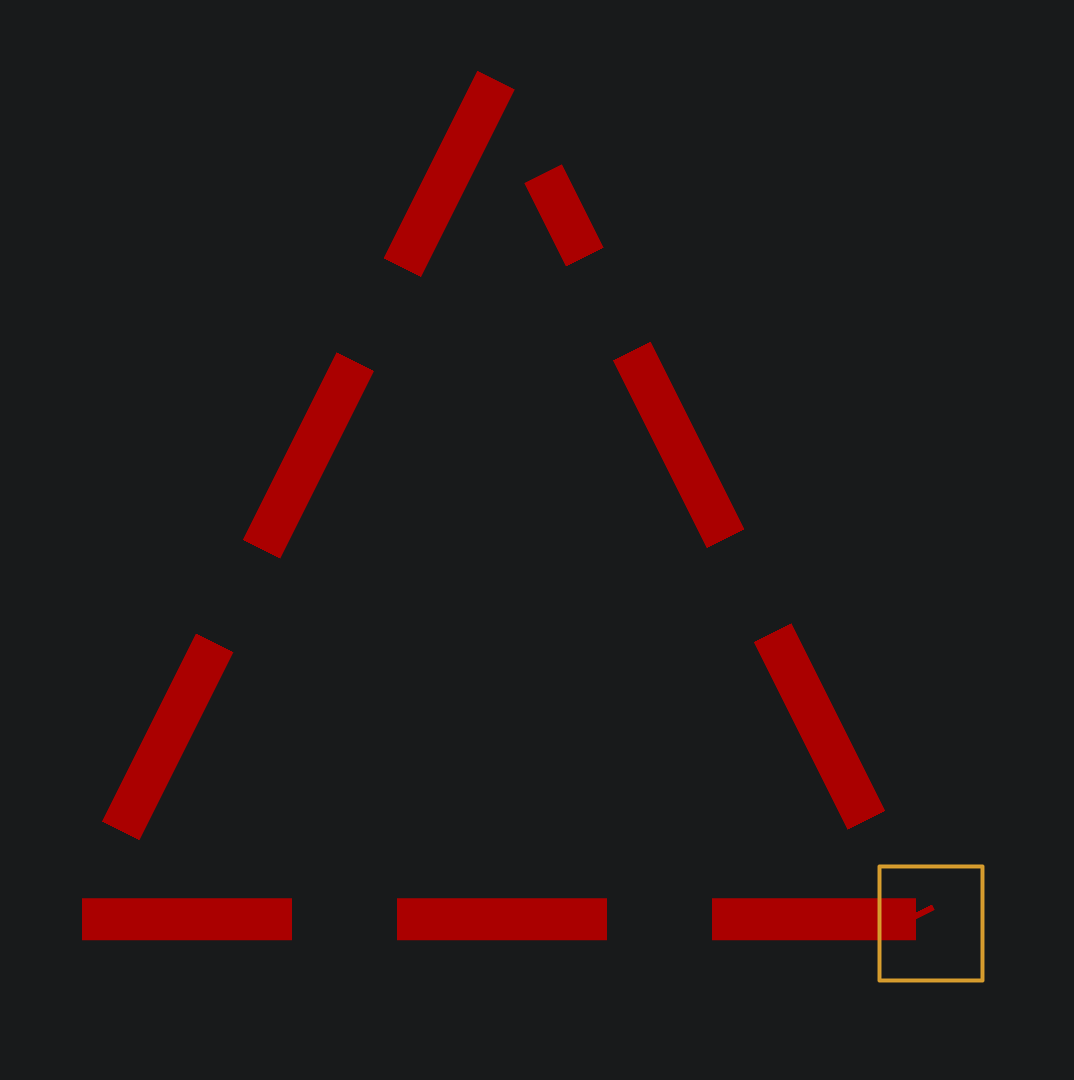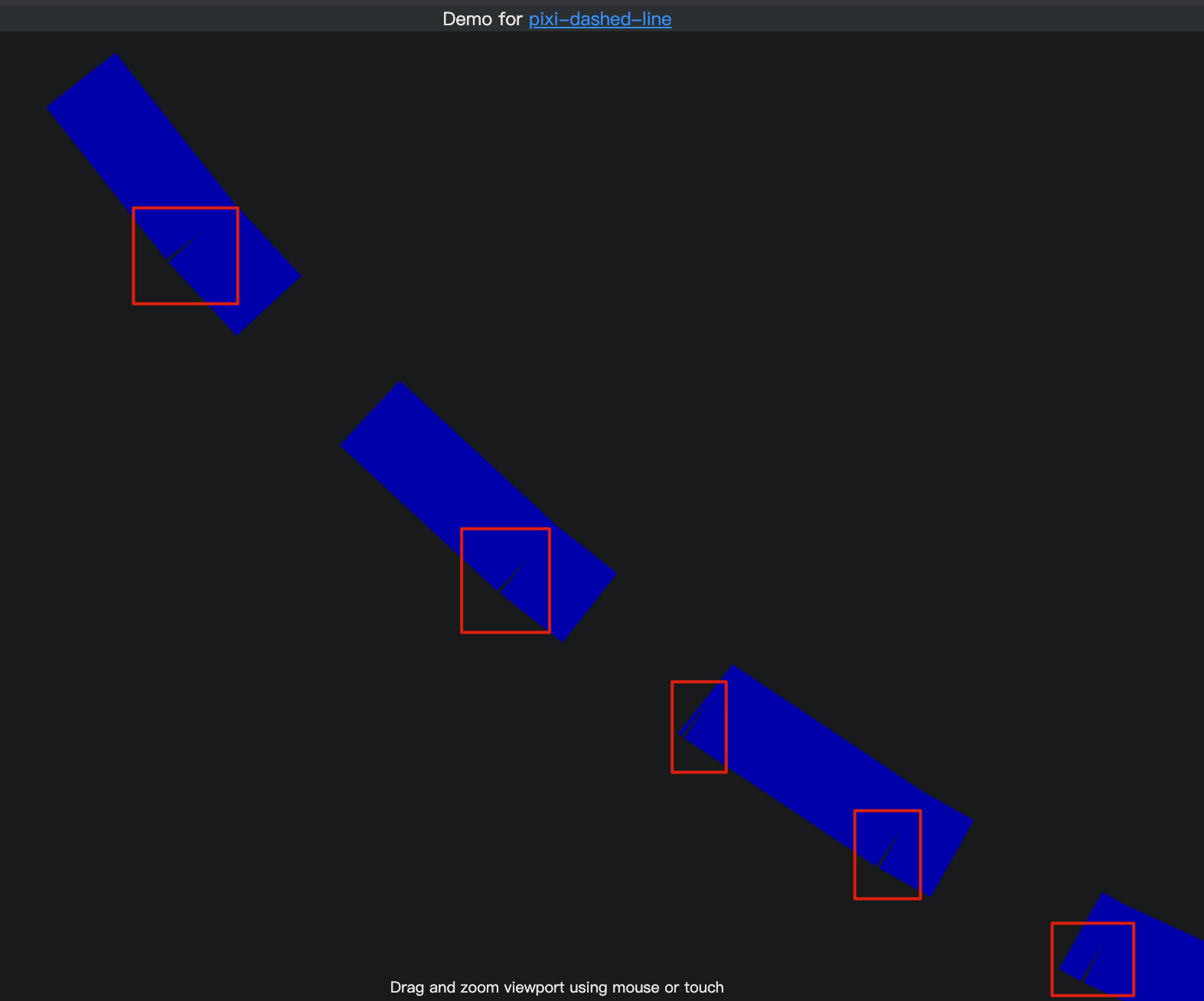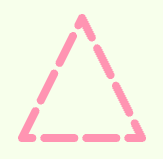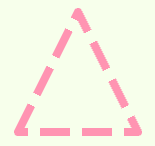A pixi.js implementation to support dashed lines in PIXI.Graphics.
- Two implementations of a dashed line for pixi.js: lineTo/moveTo w/gaps (preferred), and texture-based (using a dashed-line texture when drawing the line)
- Dashed support for lineTo, drawCircle, drawEllipse, drawPolygon
- Dashed lines can be scaled (allows for dashed lines to remain the same size regardless of zoom level)
https://davidfig.github.io/pixi-dashed-line (source code)
DashLine.DashLineOptions = {
useTexture?=false - whether to use a texture or moveTo/lineTo (see notes below in README.md)
dashes?=[10, 5] - an array holding one or more [dash, gap] entries, eg, [10, 5, 20, 10, ...])
width?=1 - width of the dashed line
color?=0xffffff - color of the dashed line
alpha?=1 - alpha of the dashed line
options.cap? - add a PIXI.LINE_CAP style to dashed lines (only works for useTexture: false)
options.join? - add a PIXI.LINE_JOIN style to the dashed lines (only works for useTexture: false)
options.alignment? - change alignment of lines drawn (0.5 = middle, 1 = outer, 0 = inner)
}Moves cursor to location
Draws a dashed line. If closePath = true, then lineTo will leave a proper gap if its destination is the first point (ie, if this line closes the shape)
where x,y is the center of circle, and points are the number of points used to draw the circle; matrix is applied before the draw (this adds a shape-specific transform to pixi's DisplayObject transforms)
drawEllipse(x: number, y: number, radiusX: number, radiusY: number, points=80, matrix?: PIXI.Matrix)
where x,y is the center of ellipse, and points are the number of points used to draw the ellipse; matrix is applied before the draw (this adds a shape-specific transform to pixi's DisplayObject transforms)
draws a dashed rectangle; matrix is applied before the draw (this adds a shape-specific transform to pixi's DisplayObject transforms)
draws a dashed polygon; matrix is applied before the draw (this adds a shape-specific transform to pixi's DisplayObject transforms)
changes line style to the proper dashed line style -- this is useful if the graphics element's lineStyle was changed
import { DashLine } from 'pixi-dashed-lines'
...
const g = stage.addChild(new PIXI.Graphics())
const dash = new DashLine(g, {
dash: [20, 10],
width: 5,
color: 0xff0000,
})
// draws a dashed triangle
dash.moveTo(0, 0)
.lineTo(100, 100)
.lineTo(0, 100)
.lineTo(0, 0)For most use-cases, the lineTo/moveTo (options.useTexture = false) is better because it provides a more accurate implementation and supports cap and join styles.
The texture-based approach (options.useTexture = true) is useful when the geometry is very large or very small as PIXI.Graphics does not handle those cases well (see https://www.html5gamedevs.com/topic/24876-weird-lines-when-using-extreme-coordinate-values/). You'll know you need this if zooming in and out on the dashed line causes out of memory errors :)
options.useTexture=true does not use pixi.js's line joins and caps for connecting lines (see https://mattdesl.svbtle.com/drawing-lines-is-hard): instead it uses Graphics.lineTextureStyle to supply a texture to draw the dashed lines. The texture needs a custom matrix to properly rotate the dash based on the angle of the next line (and to translate the texture so it starts properly (see https://www.html5gamedevs.com/topic/45698-begintexturefill/)). Without the matrix, the dash's length will change as the line's angle changes.
Regrettably, pixi.js does not provide a mechanism to change the matrix of a texture without breaking the current line with a moveTo command. (This was my key insight that finally got this working. I banged my head many hours trying to figure out why the texture did not rotate properly. The answer was that you have to moveTo before changing the matrix.)
Ideally, the dashed line functionality should be built directly into pixi.js's Graphics line drawing module w/logic that separates the triangles of the dashed line to take into account changes in the angle of the line. I thought about adding it, but decided the amount of work was not worth it. (Especially since the use case for useTexture is limited to strange PIXI.Graphics geometries.) Maybe someone does a different calculus and adds this feature directly into pixi.js and makes this library obsolete.
MIT License (c) 2021 David Figatner




